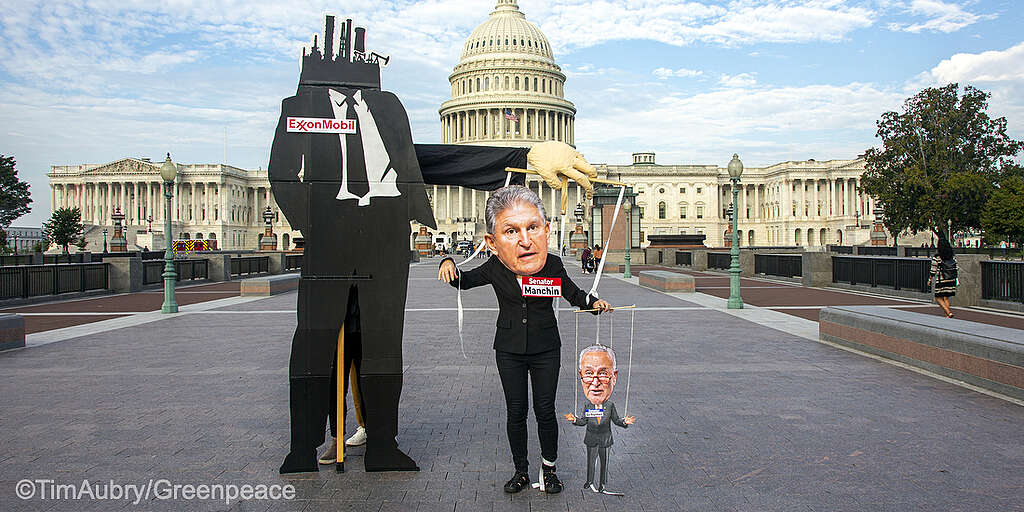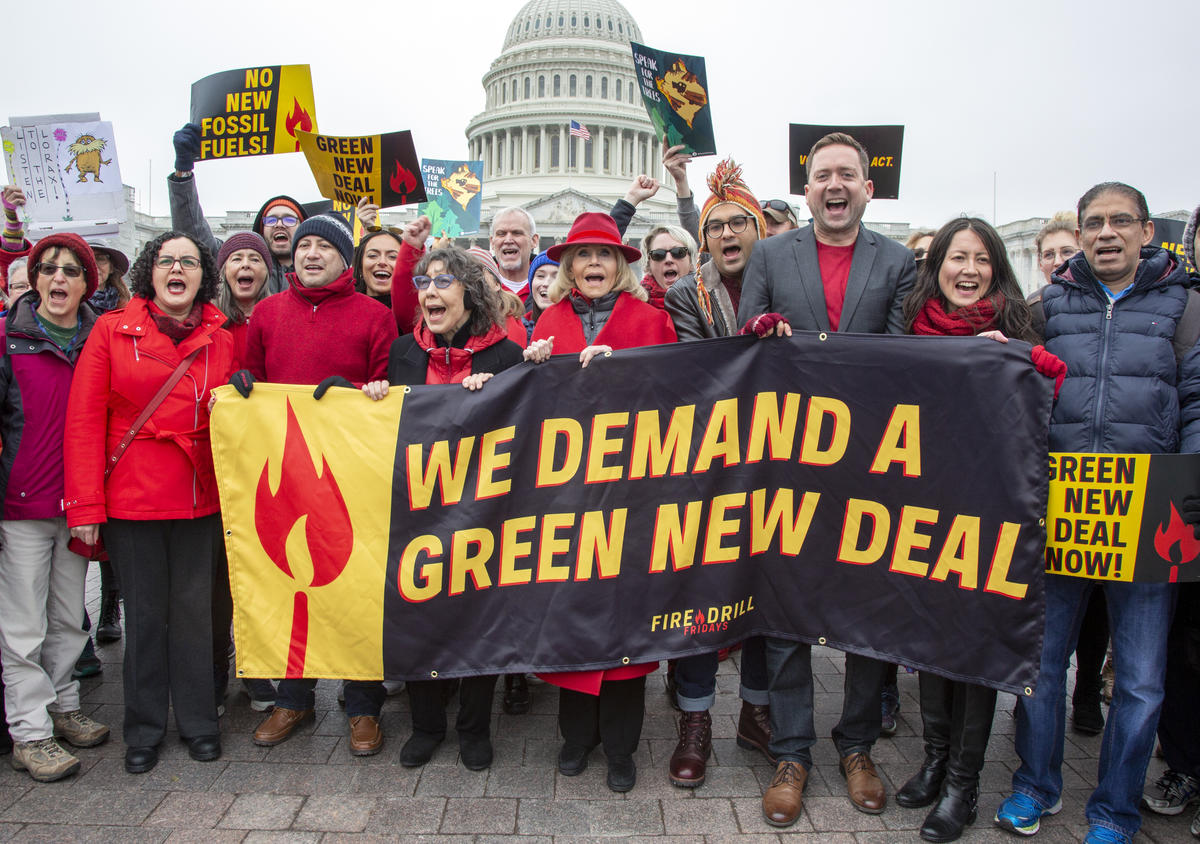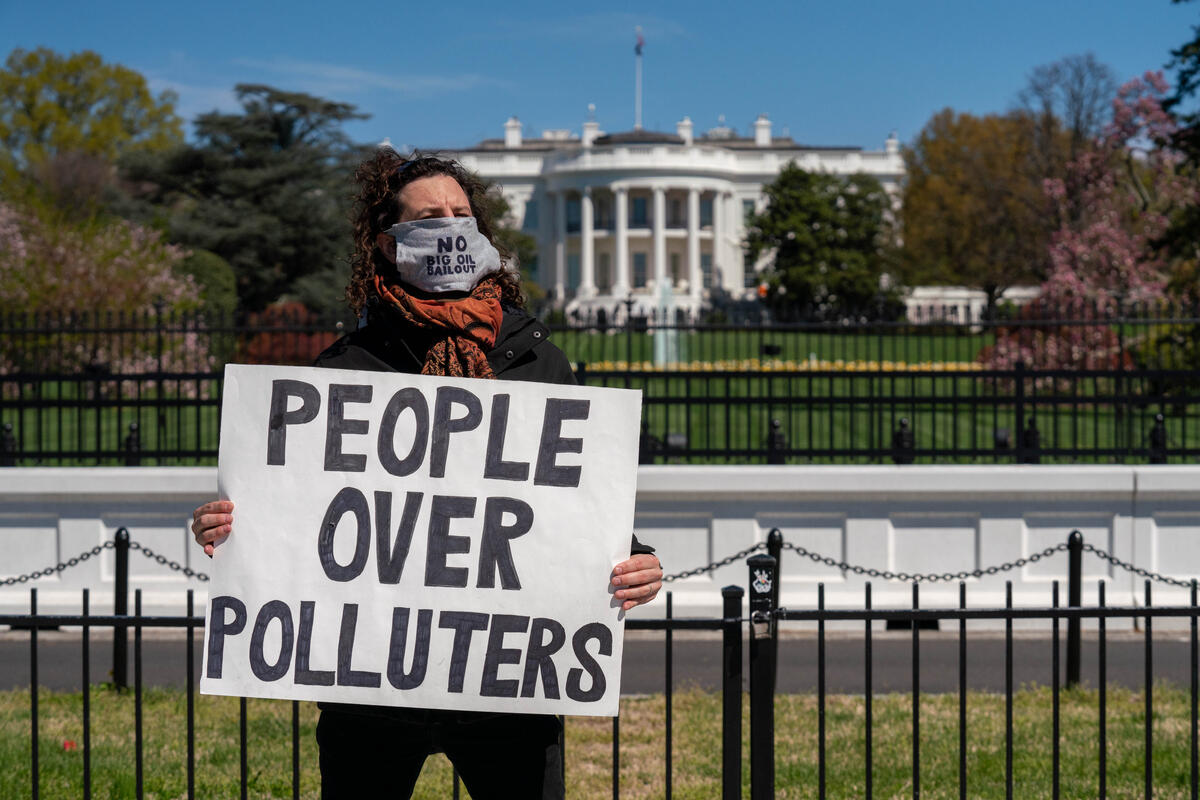
Toolkit: Meet with Your Local Representatives to Stop the #DirtyDeal
Introduction
Senators Joe Manchin and Chuck Schumer made a closed-room “#DirtyDeal” that would greenlight more coal, oil and gas projects our planet cannot afford. This deal could sacrifice lives and the health of communities — especially those in Alaska, Appalachia, and the Gulf Coast. Luckily, there is still time to stop it from becoming law.
This #DirtyDeal is a foul, unjust, and regressive giveaway to the oil and gas industry that would endanger our environment and public health. According to a leaked draft, this deal would gut the tools communities have to make their voices heard on projects that affect them, including the Clean Water Act and the National Environmental Policy Act (NEPA). This would fast-track harmful fossil fuel projects and silence frontline voices, particularly those of Black, Indigenous, Latine, low-income, and/or rural communities that so many of these infrastructure projects harm.
YOU can help us stop the #DirtyDeal from becoming law! ACT NOW. This could become law within the next 4 weeks, so we’re in an all hands on deck fight against this deal for our planet and communities. The good news is: we have a real shot at stopping the #DirtyDeal. Our members of Congress work for us, and they don’t owe Senator Manchin ANYTHING. They owe us clean air and a livable planet. So let’s use our people power to demand they vocally oppose this #DirtyDeal. Time and time again, history shows us that the most effective way to drive change is to directly meet with our elected representatives and make some noise! That’s why Greenpeace USA is calling on supporters to meet with your elected officials to tell them that they must do everything in their power to stop this deal!
If you haven’t set up a meeting with an elected official’s staff before, don’t worry. These meetings can be fun and empowering, and most importantly — persuasive. As a constituent, it is your job to share your views on how their actions impact the issues you care about.
Phase 1: Schedule a meeting

Jane Fonda and Lily Tomlin lead the speakers in a march to the Capitol.
Schedule a meeting with your member of Congress!
Decide who to meet with
- If you don’t know who your Senators and House Representatives are, use this handy tool to look them up (note: email is optional).
Who should you prioritize meeting with?
- Pressuring members in all categories is important — however, use this guide to help you decide who would be the most strategic.
- If you are unsure which members of Congress to prioritize, reach out to [email protected]
- If there is more than one strategic target, feel free to reach out to more than one to set up meetings if you are able and willing!
- There’s also a chance that setting up a meeting may be difficult so reaching out to multiple representatives could better ensure you get at least one meeting scheduled.
Decide if you’ll meet in-person or virtually
An in-person meeting can often be more impactful, informative, and engaging. However, virtual calls can accommodate busy schedules. Talk with your attendees and see what they prefer before reaching out to your representative.
Set up your meeting
Call the local office of your member of Congress. Often the information is located in the “contact us” section or at the bottom of their website.
When you call, Be prepared with your request for a meeting and why you want to meet with them — and keep it very short and to the point. Ask for the scheduler and make sure to get their email contact information BEFORE you are transferred.
Sample script: Hi, I’m (Name) a constituent from (City/State), and I’d like to set up a meeting (virtual or in-person) with (Congressperson) to discuss Manchin’s dirty permitting deal. May I speak with a scheduler to set this up and get their email contact as well? (Pause for response – write down email and phone. Repeat the first part of the script with the scheduler live or via message when transferred.)
Tips:
- Send a follow-up email immediately after you speak with the scheduler or leave a message. Here’s an example:
- Dear Scheduler, I am writing to request a virtual meeting with Rep./Sen. [name] the week of [insert date] to discuss Manchin’s dirty permitting deal. A group of constituents, representing [professions/ communities] would like to meet with [representative/senator] to discuss how this bill could jeopardize communities on the frontlines of fossil fuel infrastructure and once again puts D.C. political deal-making above the health and safety of our communities. Please let me know as soon as you can about Rep./ Sen. [name]’s availability. Thank you for your time and attention to this request.
Sincerely,
Name
Profession, Greenpeace USA volunteer
City, State, Zip code
List of any attendees you’ve confirmed” - If you don’t hear back by the next day, call again. Ever heard the saying ‘the squeaky wheel gets the grease’? This is especially true with elected officials — courteous and respectful persistence pays off.
Reach a dead end?
- If you reach out multiple times with no success, it’s time to pivot. Show up anyway!
- Check out these two toolkits: Congressional Drop-By and Creative Resistance toolkit (coming soon!)
Things to remember:
- Prioritize finalizing the meeting time, even if you haven’t recruited attendees yet. The meeting date and time will be dictated by the office, so take what they offer you. Most of your group will be motivated to attend once a meeting is secured.
- Ask for 30 minutes. You may wind up only getting 10 or 20 minutes with the official, as they are busy people, but start out asking for 30.
Add your meeting to the Greenpeace USA events map
- Include a max number of attendees of 8 (your ideal target # of attendees is 3-5 — not including yourself — but setting a cap of 8 allows for normal drop-off rates).
Phase 2: Invite others to join you

Greenpeace activist John Noel protests a meeting between President Trump and oil executives at the White House where they plan to ask for taxpayer bailout.
Recruit others to join you! The ideal number of attendees for a lobby meeting is about 3-5.
- Sample text: Hey (Name)! I’m reaching out because I just set up a virtual lobby meeting with (Congress member’s name) on (Date/Time) regarding Manchin’s dirty permitting deal. I’m looking for people to join me in this meeting, and I think your voice would be great in that space. It’s pretty easy, and I’ll make sure to prep you so you feel confident going into the meeting. Can you attend?
Let us know if you would like Greenpeace to invite additional supporters. You have the option of texting Greenpeace supporters in your area to join you. Your best and most reliable recruits will be people you know, but this could be a good option if you need recruitment support or want to connect with other Greenpeace supporters locally.
Watch our lobby 101 training
You’ll learn what makes a good lobby meeting, what to prepare before your meeting, and get your outstanding questions answered.
Phase 3: Prepare for and host your meeting

Break Free Action in Washington D.C. Break Free supporters gather in front of the White House in Washington, D.C.
Prep for the meeting
- Check out the sample agenda and script.
- Read through this one-pager. (Coming soon!)
- Follow up with the scheduler 1-2 days before the meeting to confirm. Sometimes schedules can change quickly, so it is good to re-confirm your meeting.
Hold a prep meeting with your group
Meet with your group before your meeting with your member of Congress. Determine who will be the main speaker and go over your talking points together.
- Here’s how to schedule a virtual meeting (Google Meet is the best free option, but you can also use Zoom if you have a paid account).
- Use this agenda to prep for your meeting.
Talking points
Senator Manchin made a deadly handshake deal to fast-track approvals for coal, oil, and gas projects. We know we cannot afford any fossil fuel expansion if we’re going to avoid a climate catastrophe, and this deal could sacrifice frontline communities in Alaska, Appalachia, the Gulf Coast, and elsewhere to the pollution that already kills millions each year. Manchin is bought and paid for by big oil and big coal. We cannot allow one man the power to break our democracy–and in the process destroy our climate and our communities. There is still time: we must stop this deal from becoming law.
Top Messages:
This deal would greenlight more oil and gas projects that will drive us toward climate catastrophe and could devastate public health. The science is crystal clear: if we want a habitable planet, we cannot afford any new coal, oil, or gas projects.
- Joe Manchin receives more fossil fuel money than any other US Senator. This bill is bought and paid for by the corporations destroying our planet–it literally bears a watermark of the oil and gas industry.
- This dirty deal requires the President to promote and prioritize new fossil fuel, biofuel, and unproven carbon capture projects.
- This legislation would not benefit renewable energy projects; the Biden Administration has already adopted a Permitting Action Plan that would fast-track clean energy in a responsible and environmentally appropriate way.
This deal would sacrifice millions of people in frontline communities on the altar of corporate greed. Pollution from fossil fuels kills millions of people each year.
- This bill would give the fossil fuel industry free rein: it would gut environmental reviews, public comment, and new oil and gas projects, silencing the public’s voice on proposals that threaten our water, land, and public health. It undermines the National Environmental Policy Act (NEPA) and the Clean Water Act (CWA).
- We already paid an incredibly high price with the fossil fuel handouts in the Inflation Reduction Act – from mandates for new leasing to credits for false solutions – and we’re not going to allow our communities to keep being sacrificed through this dirty deal.
Our very democracy is at stake. This deal takes away one of the key ways that communities can fight back against devastating fossil fuel projects, and it does so because two Senators made a backroom deal. Our lives and health are not pawns in political games.
Meet with the elected official (or staffer)
Make sure that you and your group are prompt and maintain courtesy at all times.
Find a detailed and tailored script here and below is the basic outline of your meeting:
- Thank you for making the time to meet with us. We wanted to meet because… (tailored messaging on End Polluter Welfare Act and Thrive demands)
- Each person introduces themselves with their name, where they live, and a few words about why this issue personally matters to them (this needs to be very short – shoot for 1 min each)
- So with all that said, we of course want to hear from you. Will Rep/ Sen…. (targeted ask for each category will be included in the script).
Please remember that you are at this meeting as a concerned constituent and community member. You may represent yourself as a volunteer with Greenpeace, but please do not directly or by implication represent yourself as Greenpeace staff, or speak on behalf of the organization.
After your meeting
Send a “thank you”. After the meeting, send a thank you note or email to the staffer you spoke to with this fact sheet. If you said you would get back to them with any additional information, do so promptly.
Report back! Let us know how your visit went – fill out this quick form. Make sure to take note of who attended your meeting.
Lobbying Pro-Tips
- Be patient if the office does not get back to you right away. Staff members are very busy, constantly juggling lots of issues and deadlines. Respectful persistence will be key here.
- Always be polite and respectful even if the elected official has an opposing view.
- You will likely meet with a staff member rather than the elected official themselves. These meetings are equally as important because they will carry your message to the elected official. Work to build a relationship with this person, as they will likely be your ongoing link to the office for future conversations.
- Come to the meeting prepared: know your subject matter and be familiar with the position of your elected official. We want them to know we’re paying attention.
- If the staff member asks you a question you don’t have an answer to, let them know that you don’t know and you’ll do some research and get back to them. It’s completely OK not to have all the answers or be an expert — your job primarily is to convey your passion and concern as a constituent.
- If it’s a virtual meeting, make sure your background isn’t noisy and that all participants mute while they are not speaking.
- Most importantly, speak from the heart. In addition to your talking points, share a brief personal story about why you are passionate about this issue.
Lobby Targeting Guide
The goal is for you to have smart, strategic conversations with your members of Congress.
Resources
- Find your Congressperson
- Target Guide
- Talking Points, Script, and Agenda
- Lobbying 101 Training slide deck
- Advocacy Overview slide deck
Questions
If you have any questions or run into any issues, reach out to the Distributed Organizing Team at [email protected]
